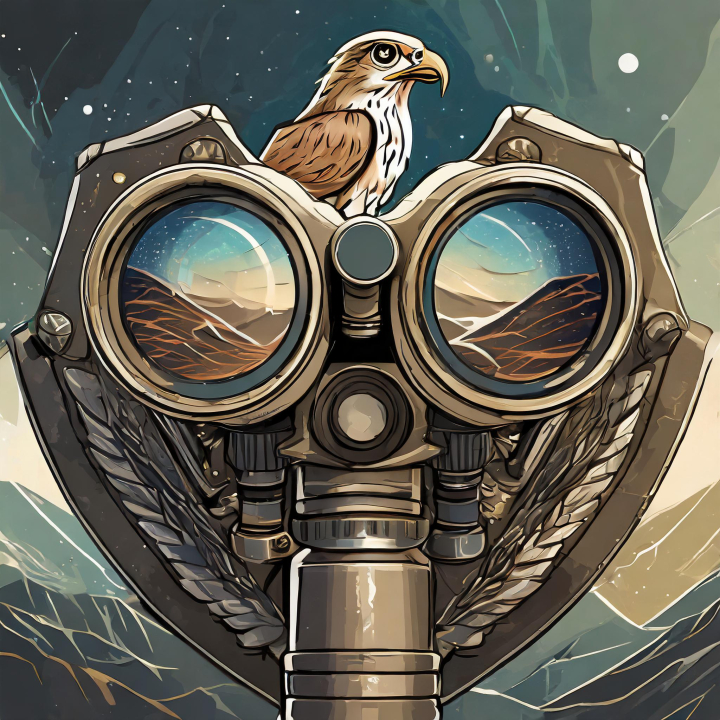UMD CS Graduate Student Abhimanyu Hans Leads Team Behind New AI Text Detection Tool
As AI-generated content spreads across digital platforms, distinguishing it from human-written text is becoming an urgent challenge. Researchers at the University of Maryland have responded with “Binoculars,” a tool designed to meet this demand through innovative detection methods.
Abhimanyu Hans, a graduate student in the Department of Computer Science, is the lead researcher behind the tool. Tom Goldstein, the Volpi-Cupal Endowed Professor of Computer Science with an appointment in the University of Maryland Institute for Advanced Computer Studies (UMIACS) and Avi Schwarzschild, who earned his Ph.D. in applied math and scientific computation in 2023 are also key contributors.
The technology, created in response to growing concerns over the impact of AI-generated text on digital platforms, relies on a method that differs from traditional detection tools. Rather than depending on a single large language model (LLM) to evaluate text, Binoculars uses two models, comparing their output to enhance detection accuracy. This dual-model system is designed to distinguish between human and machine-generated content with over 90% accuracy while maintaining a false positive rate as low as 0.01%.
Hans, who began work on the project in the summer of 2023, explained that Binoculars came out of a need to address limitations in existing detection tools. Current methods often rely on “perplexity”—a measurement of how predictable a text is to a language model—but using a single model for this purpose has limitations.
By applying two pre-trained LLMs, Binoculars contrasts outputs, creating a more refined analysis to determine whether content is AI-generated or human-written.
“This approach lets us measure how both models interpret the same text and, ultimately, whether that content resembles patterns typical of AI writing,” Hans said. “It’s an alternative to traditional methods, and it doesn’t rely on having control over the generation process, unlike watermarking-based systems.”
The problem of distinguishing AI-generated text is challenging, especially given the increasing sophistication of LLMs like ChatGPT and similar models. Watermarking, a commonly discussed detection method, requires embedding a detectable marker in AI-generated content. However, this method depends on cooperation from those who create the content and doesn’t support third-party detection, which limits its use in many real-world applications.
Binoculars addresses this gap, enabling third-party detection by analyzing text independently, regardless of the source. By using freely available pre-trained language models, Binoculars can spot AI content across multiple platforms without needing a specific watermark, extending its usability for entities lacking direct access to the AI generation process. This flexibility is critical in fields like social media, where verifying content authenticity can help moderate the spread of misinformation.
The development of Binoculars follows a rise in the prevalence of AI content, particularly in areas susceptible to manipulation, such as news platforms. For example, during election cycles, automated bots generate content aimed at influencing public opinion, often with misinformation.
According to Hans, Binoculars could support moderation efforts on social media.
“Social media is one area where AI-generated content can be especially disruptive,” Hans said. “Binoculars has potential as a moderation tool, identifying inauthentic or potentially harmful posts that contribute to information overload and might otherwise go undetected.”
Despite its potential, Hans cautioned against overusing such technology in certain sectors.
“It’s important for this kind of technology to maintain a balance. In education, it’s more about promoting academic integrity than enforcing strict detection,” he said, emphasizing that the tool is best suited for areas where machine-generated content poses a risk to information integrity.
The technology earned UMD’s Best Invention Award in the information sciences category at this year’s UMD Invention of the Year competition, held during the annual Innovate Maryland event on April 29. Selected alongside three other category winners, Binoculars stood out among 154 inventions disclosed at UMD over the past year.
—Story by Samuel Malede Zewdu, CS Communications
The Department welcomes comments, suggestions and corrections. Send email to editor [-at-] cs [dot] umd [dot] edu.
